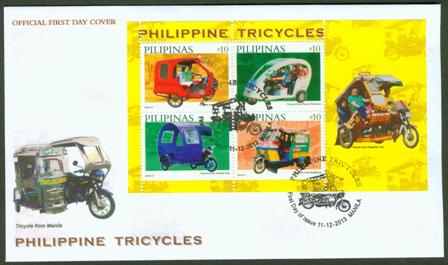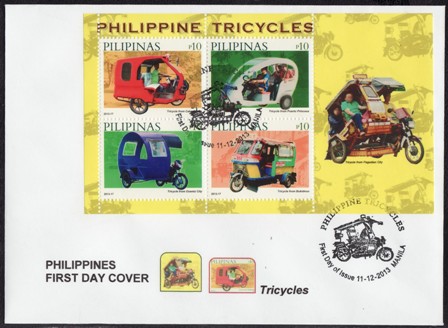2013, November 13. Philippine Tricycles
Litho Offset. Amstar Company, Inc. Perf 14
Se-tenant Blocks of 4, Miniature Sheets of 16; Souvenir Sheets of 4
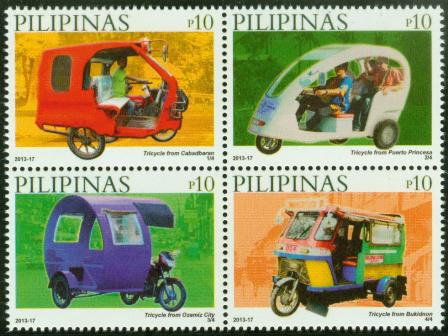
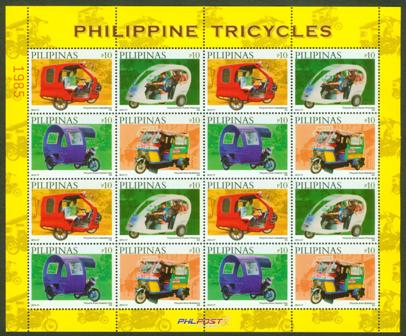
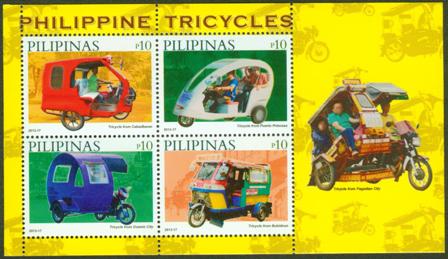
Se-tenant Blocks of Four (37,500)
10p Tricycle from Cabadbaran, Agusan del Norte
10p Tricycle from Puerto Princesa, Palawan
10p Tricycle from Ozamiz City, Misamis Occidental
10p Tricycle from Bukidnon Province
40p Souvenir Sheets of Four (5,000)
First Day Covers: Manila
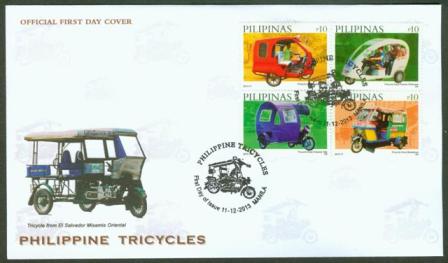
Phlpost Official FDC envelopes
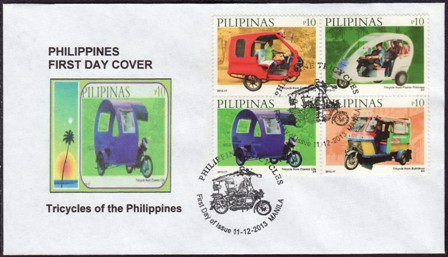
Privately Issued
TRICYCLES OF THE PHILIPPINES - MODE OF TRANSPORTATION
Tricycles or Motorized Tricycles are a common means of passenger transport everywhere in the Philippines, except on busy major highways and very busy city streets, where they are used as public utility vehicles either plying a set route or for-hire.
Motorized tricycles are an indigenous form of the auto-rickshaw and built in a variety of styles which differ from city to city. All are built around an imported, mostly Japanese, motorcycle. One variety has a cab completely enclosing the motorcycle and rider. These accommodate three to four passengers - luggage or boxes can be placed on the roof. A passenger sits next to the driver and up to three passengers can be seated in two bench seats in a compartment behind the rider and front seat. These can be completely enclosed in plastic during rainy weather.
Another variety for passengers has a motorcycle on the left side and a side car on the right side. Usually both the cycle and sidecar are covered, but not always by the same roof.
Usually one or two passengers can ride behind the driver and two to six or more in the side car depending upon the design. Some tricycles can fit 9 passengers.]
Passenger fares are cheaper than for taxis, yet more expensive than for jeepneys. Fares range from P6 to P250, depending on the locality and the distance to be ridden. Inside cities tricycles usually operate as shared taxis, where passenger fares are calculated per passenger and after the distance travelled. These fares are close to the fares of jeepneys. For longer journeys or in areas with heavy tourism the driver will usually request, that the passenger hire the whole tricycle and negotiate a "special fare", which will then be closer to that of a taxi. [4]
http://en.wikipedia.org/wiki/Motorized_tricycle_(Philippines)
-
Transportation
